A Traveller’s Guide to Vietnam 8 UNESCO World Heritage Sites
Introduction to the 8 UNESCO World Heritage Sites in Vietnam
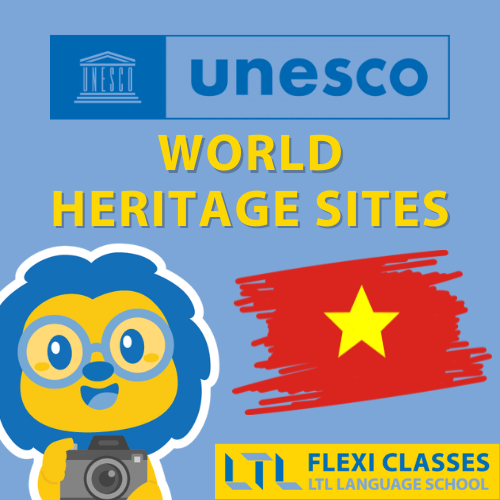
Vietnam is home to eight UNESCO World Heritage Sites, each of which is unique and has something special to offer.
If you are planning to visit Vietnam, exploring these heritage sites should be on top of your list!
In this article, we will take you through a guide to Vietnam’s 8 UNESCO Heritage Sites, their history, culture, and the best time to visit them.
Vietnam World Heritage Sites || Hạlong Bay
Vietnam World Heritage Sites || Hội An Ancient Town
Vietnam World Heritage Sites || Huế Imperial City
Vietnam World Heritage Sites || Mỹ Sơn Sanctuary
Vietnam World Heritage Sites || Phong Nha-Kẻ Bàng National Park
Vietnam World Heritage Sites || Thăng Long Imperial Citadel
Vietnam World Heritage Sites || Tràng An Landscape Complex
Vietnam World Heritage Sites || Citadel of the Hồ Dynasty
Vietnam World Heritage Sites || Best Time to Visit
Vietnam World Heritage Sites || FAQs
Psst… Don’t forget to check out our Ultimate Guide to Chinese UNESCO Sites here!
Vietnam UNESCO Sites || Hạlong Bay
Hạlong Bay is a natural wonder and one of the most popular tourist destinations as well as the most popular UNESCO Heritage Sites in Vietnam.
It is located in the Gulf of Tonkin and features around 1,600 limestone islands and islets, most of which are uninhabited.
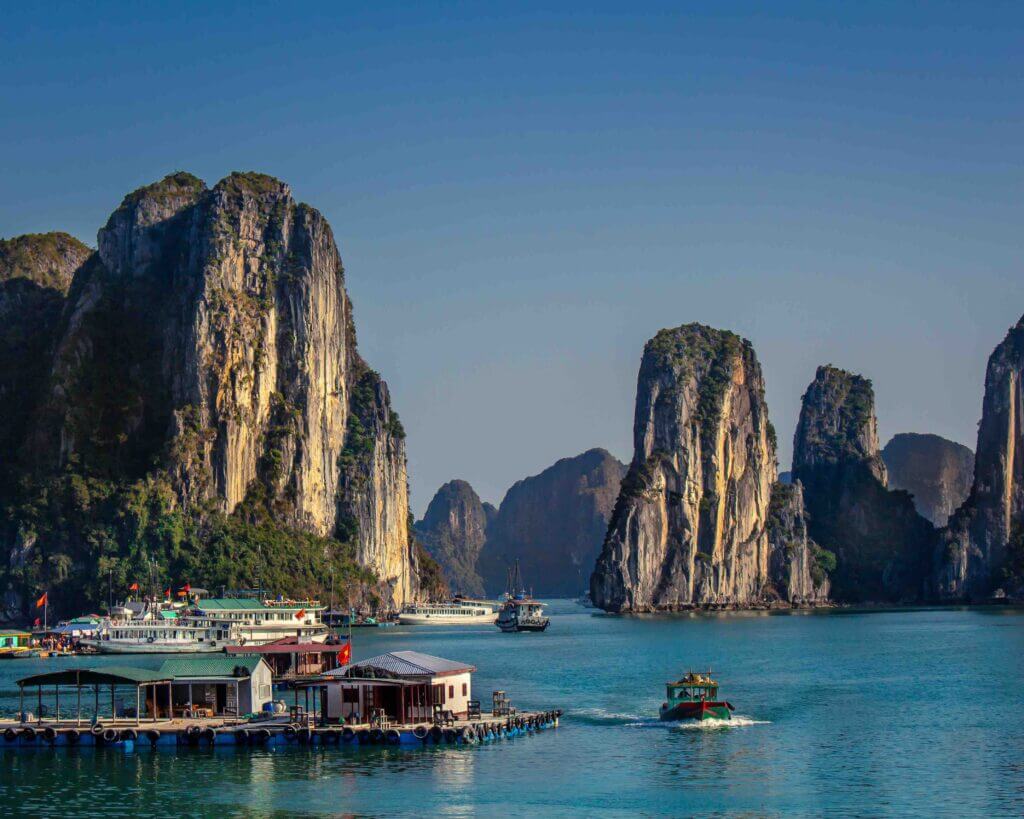
The bay is known for its spectacular scenery, emerald waters, and limestone cliffs. Visitors can take a cruise, explore the caves and grottos, and enjoy the seafood.
Located in the Gulf of Tonkin, in the northeastern part of the country, the bay covers an area of more than 1,500 square kilometers and features over 1,600 islands and islets, most of which are inhabited.
The islands vary in size and shape, and many of them are home to caves, grottos, and hidden beaches that visitors can explore.
Visitors can visit Hạlong Bay on a boat tour and partake in activities such as kayaking, swimming, fishing and even stay on traditional wooden boats or luxurious cruises for the night!
On a more historical side, Halong bay has been inhabited by various ethnic groups for thousands of years, and is home to several floating villages where people still live on boats and depend on fishing for their livelihood.
Check out this fantastic Travel Guide to Hạlong Bay, with popular attractions, seasonal guides and free itinerary plans.
Hạ Long Bay was recognised by UNESCO as World Natural Heritage in 1994.
📍Check its location on the map.
Vietnam UNESCO Sites || Hội An Ancient Town
Hội An Ancient Town is a UNESCO Heritage Site in Vietnam that is known for its well-preserved architecture and historical significance.
It is located in the central part of the country, and was a major trading port from the 15th to the 19th century, as well as a cultural and commercial hub for the region.
The ancient town features a unique blend of architectural styles, including Chinese, Japanese, and European influences.
Visitors can explore the town’s narrow streets and alleyways, which are lined with traditional buildings, temples, and pagodas.
The iconic Japanese Covered Bridge, which dates back to the 16th century, is a popular landmark in the town.
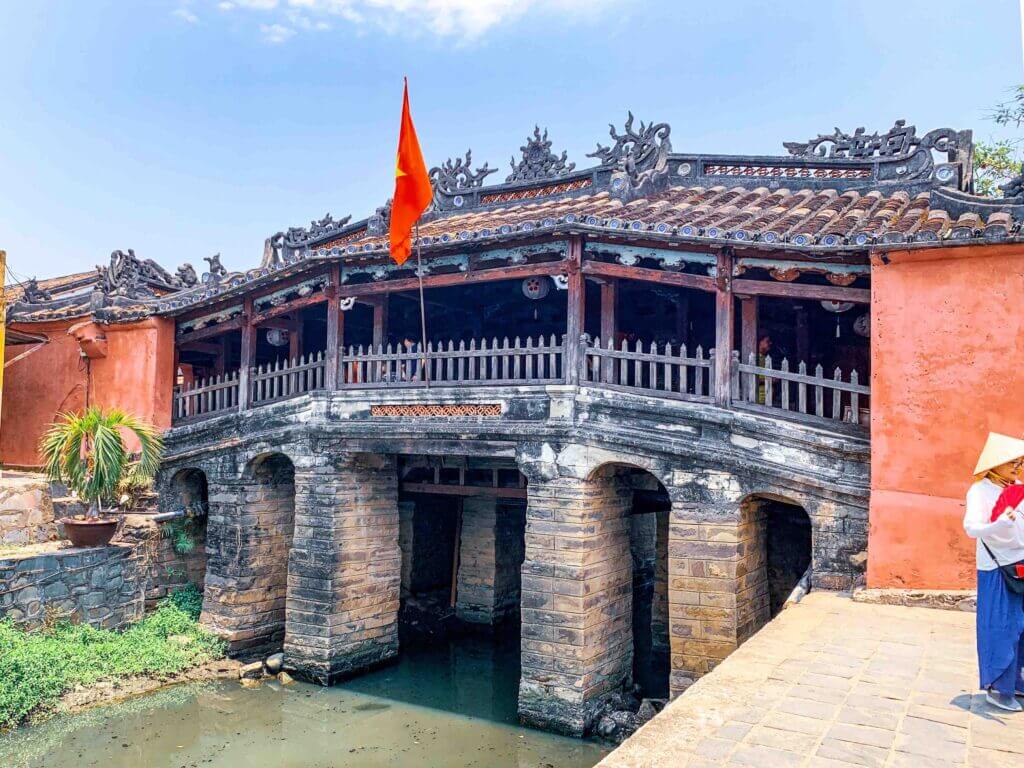
One of the highlights of visiting Hội An Ancient Town is the opportunity to participate in traditional cultural activities, such as lantern-making, calligraphy, and cooking classes.
Visitors can also enjoy a wide variety of local cuisine, including the famous Cao Lau noodles and Banh Mi sandwiches.
Do you like going to the beach? Hoi An is also a very popular destination for beachgoers, as the nearby An Bang Beach and Cua Dai Beach offer pristine white sand and crystal-clear waters, making them ideal for swimming, sunbathing, and water sports.
According to UNESCO, “Hội An Ancient Town was classified as a National Cultural Heritage Site in 1985 and subsequently as a Special National Cultural Heritage Site under the Cultural Heritage Law of 2001 amended in 2009.”
📍Check its location on the map.
Vietnam UNESCO Sites || Huế Imperial City
Huế Imperial City, located in central Vietnam was the political and cultural center of the Nguyen Dynasty, the last imperial dynasty of Vietnam.
The city was the capital of Vietnam from 1802 to 1945, and was the site of many important historical events.
The Imperial City itself is a complex of palaces, temples, and other structures that were built during the Nguyen Dynasty.
Visitors can explore the various buildings and structures within the complex, which include the Thai Hoa Palace (the Palace of Supreme Harmony), the Forbidden Purple City, and the Halls of Mandarins.
Another popular attraction within Huế is the nearby tombs of the Nguyen emperors, which are located along the Perfume River.
Each tomb is a unique architectural masterpiece, and is surrounded by beautiful gardens and natural landscapes.
Huế is also known for its cuisine, which features a wide variety of dishes that are unique to the region. Visitors can sample local delicacies such as Bun Bo Hue (spicy beef noodle soup) and Nem Lui (grilled pork skewers).
The complex of Huế monuments were added to the list of UNESCO World Heritage Sites in 1993.
📍Check its location on the map.
Vietnam UNESCO Sites || Mỹ Sơn Sanctuary
Mỹ Sơn Sanctuary is located in the central part of the country, about 40 kilometers from Hoi An, in the Quang Nam province.
It is a complex of abandoned Hindu temples and towers that were built between the 4th and 14th centuries by the Champa Kingdom.
The site was rediscovered by French archaeologists in the late 19th century, and has since been extensively restored and preserved.
The complex features around 70 structures, including temples, towers, and tombs, that are spread across several groups within the sanctuary.
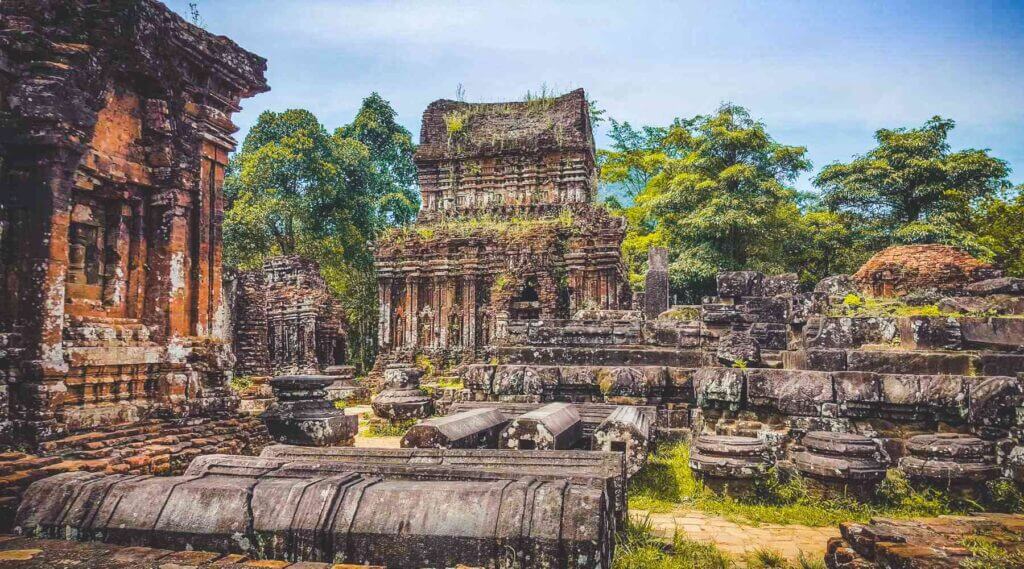
The temples at Mỹ Sơn Sanctuary depict various Hindu deities and mythological figures.
The site is considered to be one of the most important examples of Cham architecture and art in Southeast Asia.
One of the highlights of visiting Mỹ Sơn Sanctuary is the opportunity to witness traditional Cham dance performances, which take place at the site regularly.
These performances showcase the traditional music and dance of the Cham people, and offer a glimpse into their rich cultural heritage.
UNESCO designated Mỹ Sơn Sanctuary as a World Heritage Site in 1999.
📍Check its location on the map.
Vietnam UNESCO Sites || Phong Nha-Kẻ Bàng National Park
Phong Nha-Kẻ Bàng National Park is located in central Vietnam, near the border with Laos.
It is known for its stunning natural landscapes and diverse ecosystem, and is home to several important caves and underground rivers.
One of the most popular attractions within the park is the Phong Nha Cave, which is over 8 kilometers long and features stunning rock formations and underground lakes.
Visitors can explore the cave on a guided boat tour, and marvel at the unique beauty of this natural wonder.
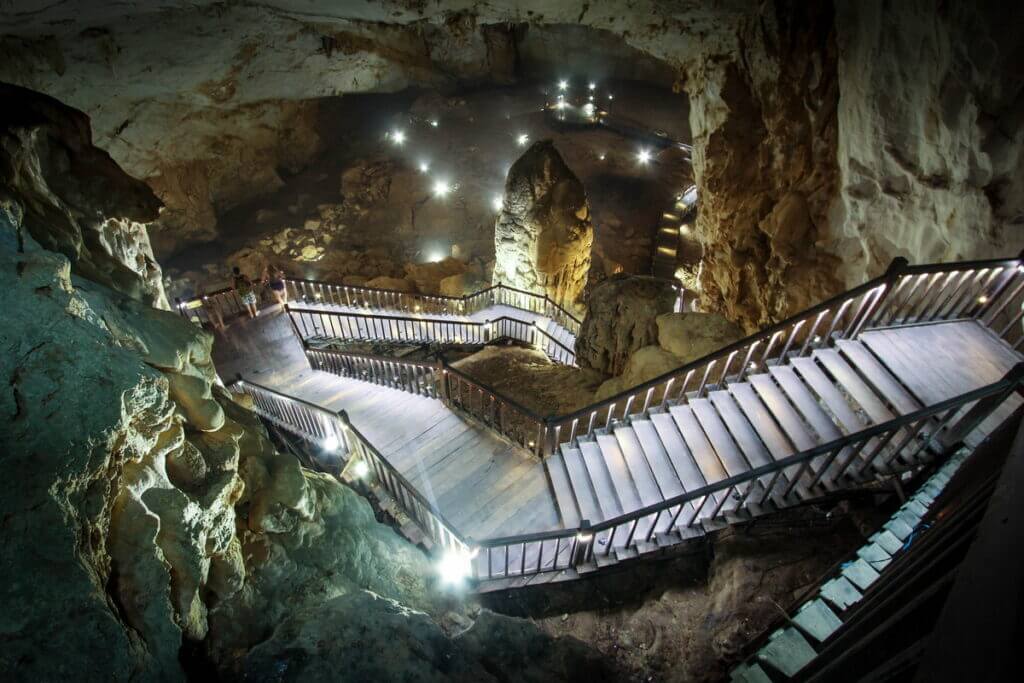
Another popular attraction within the park is the Son Doong Cave, which is considered to be the largest cave in the world.
This cave features a massive chamber that is over 5 kilometers long, and is home to its own ecosystem of plants and animals. Visitors can explore the cave on guided tours, which require advanced reservations due to limited availability.
Explore the Son Doong Cave with a 360° tour here thanks to National Geographic here.
Visitors to the park can explore the various hiking trails and waterways within the park, which offer opportunities to spot wildlife, including rare and endangered animals such as the saola, the Indochinese tiger and Asian black bear.
The park also offers opportunities for adventurous activities such as zip-lining and kayaking.
The Phong Nha-Kẻ Bàng National Park was inscribed on the World Heritage List in 2003.
📍Check its location on the map.
Vietnam UNESCO Sites || Thăng Long Imperial Citadel
Thăng Long Imperial Citadel, also known as Hanoi Citadel, is located in the heart of Hanoi, the capital city of Vietnam.
It served as the political center of Vietnam for over 13 centuries, from the 7th century until the 19th century.
The citadel was built during the Ly Dynasty (1010-1225) and served as the capital of Vietnam until the Nguyen Dynasty (1802-1945).
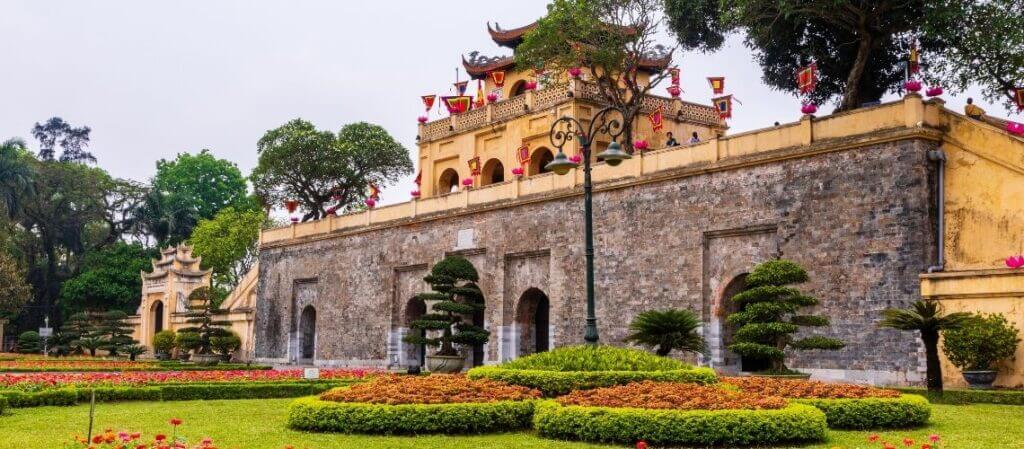
The site features a complex of buildings and structures that were used for both administrative and residential purposes, including the royal palace, temples, and other important buildings.
One of the most impressive structures within the citadel is the Hanoi Flag Tower, which stands over 30 meters tall and was built in 1812 during the Nguyen Dynasty.
The tower served as a symbol of Vietnam’s independence and strength, and is still a prominent landmark in Hanoi today.
Most buildings and structures within the complex are open to visitors.
They can learn about the rich history of Vietnam’s imperial past and gain insight into the culture and traditions of the country.
The Imperial Citadel of Thăng Long was recognised by the UNESCO as a World Heritage Site in 2010.
📍Check its location on the map.
Vietnam UNESCO Sites || Tràng An Landscape Complex
Tràng An Landscape Complex is located in Ninh Binh Province.
It is a spectacular landscape of river valleys, dotted with caves and historic temples.
It covers an area of over 10,000 hectares and is known for its stunning natural beauty and cultural significance.
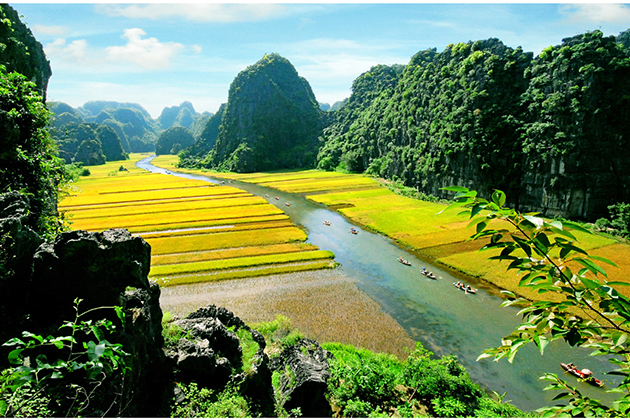
Visitors can explore this stunning landscape on boat tours, which take them through the network of waterways and into the caves and grottoes that are scattered throughout the area.
One of the most famous caves in the complex is the Hang Mua Cave, which is located on a hill and offers spectacular views of the surrounding landscape from its peak.
The cave is also home to a beautiful temple and a statue of the ancient Vietnamese general, Tran Hung Dao.
Tràng An Landscape Complex is also home to a number of historic temples and pagodas, including the Bai Dinh Pagoda, one of the largest Buddhist pagodas in Southeast Asia.
In addition to its natural and cultural attractions, Tràng An Landscape Complex is also a popular destination for adventure activities such as hiking and cycling.
The area is home to a number of trails and routes that offer breathtaking views of the landscape.
Tràng An Landscape Complex was inscribed on the list of Vietnam UNESCO Heritage Sites in 2014.
📍Check its location on the map.
Vietnam UNESCO Sites || Citadel of the Hồ Dynasty
The Citadel of the Hồ Dynasty is located in Thanh Hoa Province.
It is a well-preserved remain of a 14th-century imperial palace complex built by the Hồ Dynasty, which ruled Vietnam from 1400 to 1407.
The citadel is known for its unique architectural design and its historical significance as a symbol of Vietnamese independence and national identity.
The citadel is built entirely of stone, with massive walls, gates, and towers that are reminiscent of the architecture of the Great Wall of China.
The complex is comprised of several structures, including the Royal Palace, the Temples of the East and West, and the Enclosure of the Citadel, which served as the administrative center of the Hồ Dynasty.
One of the most impressive features of the Citadel of the Hồ Dynasty is its advanced water management system.
It includes a network of canals, ponds, and lakes that were used to irrigate the surrounding farmland and provide water for the palace and its inhabitants.
The Hồ Dynasty Citadel became a UNESCO World Heritage Site in 2011.
📍Check its location on the map.
Vietnam UNESCO Heritage Sites || BEST Time to Visit
Vietnam has a tropical climate, and the best time to visit the UNESCO Heritage Sites depends on the season.
The ideal time is from October to April, when the weather is dry and cool, and there is less rainfall.
However, the peak tourist season is from December to February, and the sites can be crowded.
Make sure to plan your trip in advance and organise your visits accordingly.
We’ve written a Guide to Weather in Vietnam, that might be of help to make some decisions.
How about taking some Vietnamese classes before you leave?
We offer Vietnamese 24/7 online on our platform Flexi Classes:
- Choose your level
- Choose your study topic
- Choose your study time
It’s that easy!
We also offer Vietnamese courses in Saigon and Hanoi, in group and individual settings.
Let us know if you have any questions.

A Beginner’s Guide to Weather in Vietnam
Due to its layout and wide range of various landscapes and terrain, the weather in Vietnam changes considerably depending on where you are travelling.
Vietnam World Heritage Sites // FAQs
Are the UNESCO Heritage Sites open all year round?
Yes, most of the sites in Vietnam are open throughout the year, except for some holidays and maintenance periods.
How can I get to the Heritage Sites?
The sites are located in different parts of the country, and transportation options include buses, trains, and flights.
Is it safe to travel to Vietnam?
Vietnam is a safe country for tourists, but it is advisable to take precautions and be aware of your surroundings, just like in any other country you visit.
What is the dress code for visiting the sites?
There is no specific dress code, but it is advisable to dress modestly and wear comfortable shoes.
What are some local dishes to try in Vietnam?
Some popular dishes include pho, banh mi, bun cha, and cao lau.
Check out our article about best Vietnamese food to add more dishes to your list!
Should I learn Vietnamese before travelling to Vietnam?
Learning Vietnamese before travelling to Vietnam will definitely help you navigate your surrounding and connect with locals more easily.
It is always reassuring to know how to order food, or take a taxi to move around.
Have a look into our online Vietnamese classes on Flexi Classes.
Start with a 7 Day Free Trial and you’ll be able to select your level, study time and study topic.
You’ll speak the basics of Vietnamese in no time!
Want More From LTL?
FANCY LEARNING VIETNAMESE? We know you’ll love our top-rated online Vietnamese courses. We offer a 7-day free trial to all new online students where you can study 24/7.
What’s more – we even offer Vietnamese courses in Vietnam too. Check out our small group classes for Vietnamese or our individual programs.
Come and be a part of our amazing community!








